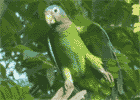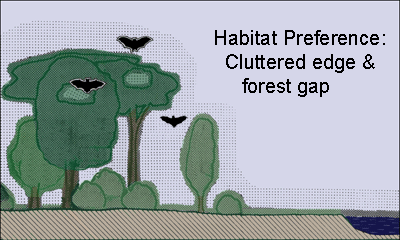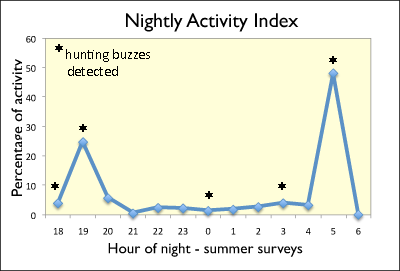Additional:
Research on this species in Cuba (Mancina et al 2013)
suggests that it may forage higher up in the canopy than P. quadridens or P. parnellii; thus it may be harder for us to detect. In Cuba, diet (from analyses of stomach contents) is
dominated by Diptera and Coleoptera; Orthoptera and Hemiptera are consumed less frequently (Silva Taboada 1979).
Vertical and temporal segregation likely enables resource partitioning and coexistence with P. quadridens and Mormoops blainvillei (Emrich et al. 2013).
During monitoring efforts using harp traps at Windsor Cave, the male : female capture ratio was 9 : 1. Further research is needed to determine if females have a maternity crèche in another cave. We also note the comment by Genoways et al. (2005): "Based on field observations it is difficult to draw many conclusions about reproduction in this species."
Acknowledgements:
Data presented on the Windsor Great Cave colony were collected through the support of:
 |
 |
 |
Literature Reviewed
Emrich, M.A., E.L. Clare, W.O.C. Symondson, S.E. Koenig, and M.B. Fenton. 2013. Resource partitioning by insectivorous bats in Jamaica. Molecular Ecology 23: 3648-3656.
Genoways, H.H., R.J. Baker, J.W. Bickham, C. J. Phillips. 2005. Bats of Jamaica. Museum Texas Tech Univ. Texas, USA. pp 155.
Mancina, C.A., L. Garcia-Rivera, and B.W. Miller. 2012. Wing morphology, echolocation, and resource partitioning in syntopic Cuban mormoopid bats. J. Mammology 95: 1308-1317.
Schnitzler, H.-U., E. Kalko, I. Kaipf, and J. Mogdans. 1991. Comparative studies of echolocation and hunting behavior in the four species of Mormoopid bats of Jamaica. Bat Research News 32: 22-23.
Schnitzler, H.-U. and E.K.V. Kalko. 1998. How echolocating bats search and find food. Pp. 183-196. In (eds. T.H. Kunz and P.A. Racey) Bat Conservation and Biology. Smithsonian Institution Press, Washington, D.C.
Silva Taboada, G. 1979. Los murciélogos de Cuba. Habana. Editorial de la Academia de Ciencias de Cuba. pp. 425.






